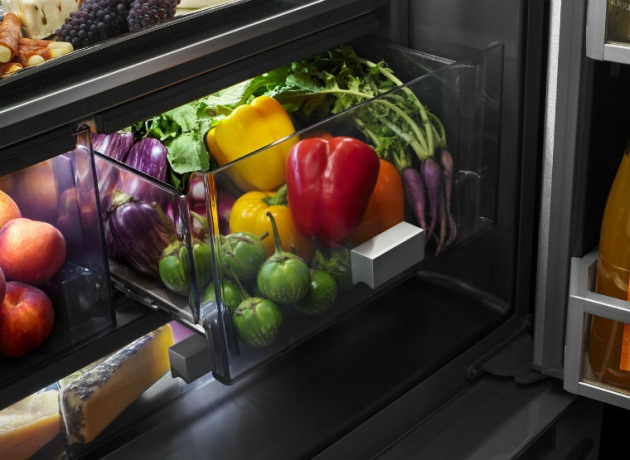The kitchen refrigerator is one of the most vital appliances in your entire home, providing the storage solutions required for a host of ingredients, pre-prepared dishes, beverages and more. You don’t want your items to spoil while in your refrigerator, and the secret to long-lasting ingredients is proper organization.
By strategically organizing your refrigerator, you can ensure that each item is placed exactly where it needs to be based on its temperature and humidity requirements, ensuring your foods do not spoil while saving you money at the grocery store. With that in mind, we’ve provided some helpful information on how to organize your refrigerator.
Items To Store Elsewhere
To maintain an organized refrigerator, you need to ensure your appliance is not overstuffed. There are a host of common ingredients that have no place in the kitchen, and storing them elsewhere will allow you to maximize space within your unit.
When organizing food, you should avoid keeping common items like tomatoes, garlic, onions and potatoes in your refrigerator. You should also store bananas and bread in non-refrigerated areas. Storing these items in room temperature conditions will free up space in your unit without putting your items at risk for going bad.
If space is limited in your appliance, you can also store citrus fruits like oranges, tangerines, grapefruit and lemons. These items are actually more juicy and delicious at room temperature, even though refrigeration will prevent their natural decomposition process.
Organize Condiments In The Door
The refrigerator door is the warmest part of your appliance, making it a bad place for highly perishable items. Instead, store all your common condiments in the door to free up shelf space for other items.
Most condiments are high in natural preservatives, allowing them to taste great even if they’re stored in warmer conditions. Items like ketchup, mustard, salad dressing and sauces should stay in good condition for a significant amount of time when stored in your appliance’s door. You can also keep pickled vegetables, jellies and jams in the door and trust that they will be preserved properly.
Use Drawers For Fruits & Vegetables
Most modern refrigerators feature “crisper” drawers designed specifically for preserving fresh produce. It may be easier to keep these items on your shelves, but doing so only means they will spoil sooner.
Standard crisper drawers offer a variety of humidity settings that help you store items at proper conditions. For delicate fruits like grapes, pears and apples, set the drawer to a low humidity level. Meanwhile, if you choose to keep citrus fruits in your refrigerator, set the drawer to a medium humidity. Crisp vegetables like green beans and carrots can also be kept at medium humidity, while veggies prone to wilting like lettuce, leafy greens and broccoli should be preserved in a high humidity drawer.
Dairy & Meat On Lower Shelves
Meat and dairy ingredients are vital to a host of popular recipes, and these items can also spoil fairly quickly. For the freshest dairy and meat, keep these items tucked towards the back on the lower shelves of your refrigerator.
The lower part of the refrigerator is typically the coldest area of the appliance, making it an ideal spot for your most perishable items. The cold temperatures found on your lower shelves are ideal for meat and dairy, as they’ll extend the lifetime of these important ingredients. For an extra blast of cold temperatures, stick particularly perishable items like milk further back on a lower shelf. Just be sure that you leave enough space between your items to allow cold air to properly circulate.
Pre-prepared Items & Leftovers On Top Shelves
The top level of the refrigerator is typically warmer than the lower level, making it an ideal location for storing pre-made food and leftovers. Prepared ingredients do not require the same cold temperatures that raw or uncooked items do, making the top shelves a great place for pre-packed lunches, leftover takeout, deli meats and more.
Modern Refrigeration Solutions For The Modern Home
The refrigerator is designed exclusively for food and beverage storage, and there’s no reason you shouldn’t be getting the most out of your appliance. Thanks to effective organization, you can take advantage of your unit’s specialized design while helping a host of delicious ingredients stay fresh for longer.
If you’re looking for a new addition to your kitchen, you can browse this online collection of refrigerators or contact a home appliance expert for further assistance.

